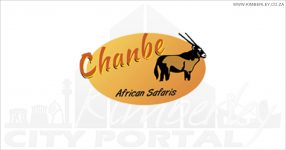-
Rudd House is a typical example of a residence built for the wealthy during the 19th century. The building is surrounded by verandahs and is lavishly furnished. It boasts a billiard room with a full-size billiard table, still in excellent condition.
Outside the house is a gigantic fig tree with its characteristic thick roots showing above ground level.
This house, then known as “The Bungalow”, was built in the late 1880’s. The core dates back to 1888 with only four rooms.
In 1896 it was bought by the mining magnate Charles Dunnell Rudd, who passed it to his son, Henry Percy Rudd, in 1898. He built on extensively during his 50 year residence.
In 1971 it was donated to the McGregor Museum by De Beers Consolidated Mines Ltd. and restored to its former glory.
Today it is a period house museum (part of the McGregor Museum) reflecting something of the lavish lifestyles enjoyed by the diamond magnates of a bygone era. Visits can be made by appointment through the McGregor Museum.
Entry Fees:
R40.00pp – Adults
R20.00pp – Children
BY THE McGREGOR MUSEUM:
Known today as Rudd House, because of its long association with the Rudd family, this house at 5 Loch Road in Belgravia, originally a simple four-roomed dwelling dating from the 1880s, was referred to as ‘The Bungalow’. C.D. Rudd acquired it in 1896 from W.H. Solomon (a judge who in 1927-9 rose to the position of Chief Justice of South Africa). Rudd’s son H.P. (Percy) Rudd took ownership in 1898 and stayed on until the 1950s.
As the family grew in size, so did the house, becoming eventually a sprawling labyrinthine mansion.
H.P. Rudd had married Mabel Blythe in 1893, their son, Bevil Gordon D’Urban Rudd, being born the following year. Bevil Rudd MC was schooled at St. Andrew’s, Grahamstown, from where he won a Rhodes Scholarship to Oxford. As an athlete, in 1920, he won the 400m sprint for South Africa at the Antwerp Olympics. He and his wife and family lived at The Bungalow until 1930 when he became an editor for the Daily Telegraph. He held the position until after World War II, returning to live in Kimberley – and he died in the night nursery in The Bungalow in 1948.
H.P. Rudd’s widow (his second wife, Emilie) lived there after H.P. Rudd’s death in 1961. Upon her death in 1963, ‘The Bungalow’ and its contents were inherited by her sister and brother in France, who auctioned off the furniture.
Unable to sell the house, it remained empty for some years before Dr Richard Liversidge, Director of the McGregor Museum, enlisted help from De Beers to purchase the house for restoration as part of the McGregor Museum.Shortlink for this post: https://www.kimberley.co.za/?p=1338
-
Phone: +27 53 839 2700Alt Phone 1: +27 53 839 2775Alt Phone 2: +27 53 839 2717Admin Mail:100% Local: -Premium Company: -Service Excellence Promise: -Local Grading: -
-
-
1 Review on “Rudd House”
Leave a Review
Rudd House
Kimberley, Northern Cape, South Africa












NOTE, you can only visit Rudd House by apointment.